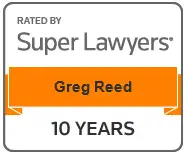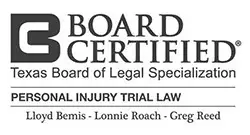Psoriasis and Psoriatic Arthritis and qualifying for Social Security Disability
Can I get Social Security Disability if I have Psoriatic Arthritis or Psoriasis?
Author Attorney Greg Reed:
Summary: Can I get disability benefits if I am suffering from the effects of psoriasis?
First you must meet the SSA’s financial requirement: You must have worked long enough, recently enough, and not made over a predetermined level of income.
Second you must meet the medical requirements:
Although psoriasis is not specifically listed as an impairment by the Social Security Administration, a person may qualify for disability if the psoriasis does not respond to treatment in three months.
You may qualify for benefits based on the listing for related ailments such as:
- Section 8.05 Dermatitis
- Section 1.02 Major dysfunction of a joint
- Section 14.09 Inflammatory arthritis.
Additionally, if you have multiple impairments Social Security will evaluate your ability to work taking into account the challenges of all your ailments combined.
About 15% of people with psoriasis develop psoriatic arthritis (or PsA). PsA is characterized by joint pain, stiffness, and swelling and can affect any part of the body. Most people develop psoriasis first, but joint problems can begin before skin lesions appear. A person who does not have psoriasis can develop PsA, but people with PsA who do not have psoriasis usually have a relative with psoriasis. Like psoriasis, people with PsA are at increased risk for other conditions such as eye problems and cardiovascular disease.

If you have Psoriatic Arthritis or Psoriasis you may qualify for Social Security disability. People with PSa may qualify under dysfunction of a joint or inflammatory arthritis. Call 512-454-4000 for help today!
PsA can affect any joint in the body. The most common symptoms are:
- Swollen fingers and toes
- Tender, painful, or swollen joints
- Red scaly skin patches known as plaques
- Reduced range of motion of the joints
- Morning stiffness
- Lower back, upper back, and neck pain
- General fatigue
- Changes to nails, such as pitting or separation from the nail bed
These or a combination of these symptoms can cause you to miss work and jeopardize your ability to maintain employment.
Like psoriasis, there is no existing cure for PsA and the goal of treatment is to improve symptoms like skin rash and joint inflammation. There are several different treatment options, but a typical treatment plan will include a combination of one or more of the following:
- Nonsteroidal anti-inflammatory drugs (NSAIDs) to control joint pain and swelling.
- Disease-modifying antirheumatic drugs (DMARDs) to prevent joint damage and slow the progress of PsA.
- Biologic drugs to reduce inflammation and improve stiff and swollen joints.
- Steroid drugs to reduce inflammation in the body (usually injected into affected joints).
- Immunosuppressants to calm the overactive immune system (though not used as often now and can weaken the immune response).
- Topical treatments such as steroid creams and ointments containing forms of vitamin D-3 and vitamin A.
- Light therapy.
Demonstrating that you are following your doctor’s treatment plan is an important part of qualifying for disability benefits.
Psoriasis and Qualifying for Disability Benefits.
Although psoriasis is not specifically listed as an impairment by the Social Security Administration, a person may qualify for disability if the psoriasis does not respond to treatment in three months.
You may qualify for benefits based on the listing for related ailments such as:
8.05 Dermatitis (for example, psoriasis, dyshidrosis, atopic dermatitis, exfoliative dermatitis, allergic contact dermatitis), with extensive skin lesions that persist for at least 3 months despite continuing treatment as prescribed.
People with psoriatic arthritis may qualify under section 1.02 (major dysfunction of a joint) and/or section 14.09 (inflammatory arthritis).
1.02 Major dysfunction of a joint(s) (due to any cause): Characterized by gross anatomical deformity (e.g., subluxation, contracture, bony or fibrous ankylosis, instability) and chronic joint pain and stiffness with signs of limitation of motion or other abnormal motion of the affected joint(s), and findings on appropriate medically acceptable imaging of joint space narrowing, bony destruction, or ankylosis of the affected joint(s)
14.09 Inflammatory arthritis. As described in 14.00D6. With:
A. Persistent inflammation or persistent deformity of:
- One or more major peripheral weight-bearing joints resulting in the inability to ambulate effectively (as defined in 14.00C6); or
- One or more major peripheral joints in each upper extremity resulting in the inability to perform fine and gross movements effectively (as defined in 14.00C7).
OR
B. Inflammation or deformity in one or more major peripheral joints with:
- Involvement of two or more organs/body systems with one of the organs/body systems involved to at least a moderate level of severity; and
- At least two of the constitutional symptoms or signs (severe fatigue, fever, malaise, or involuntary weight loss).
OR
C. Ankylosing spondylitis or other spondyloarthropathies, with:
- Ankylosis (fixation) of the dorsolumbar or cervical spine as shown by appropriate medically acceptable imaging and measured on physical examination at 45° or more of flexion from the vertical position (zero degrees); or
- Ankylosis (fixation) of the dorsolumbar or cervical spine as shown by appropriate medically acceptable imaging and measured on physical examination at 30° or more of flexion (but less than 45°) measured from the vertical position (zero degrees), and involvement of two or more organs/body systems with one of the organs/body systems involved to at least a moderate level of severity.
OR
D. Repeated manifestations of inflammatory arthritis, with at least two of the constitutional symptoms or signs (severe fatigue, fever, malaise, or involuntary weight loss) and one of the following at the marked level:
- Limitation of activities of daily living.
- Limitation in maintaining social functioning.
- Limitation in completing tasks in a timely manner due to deficiencies in concentration, persistence, or pace.
If you are 55 or older or have another medical condition you may get approval.
Social Security follows a set of rules to determine when the agency expects an applicant to learn a new job.
Applicants who are 55 or older often fall under a grid rule, which means they are not expected to learn a new job. For example, a 55-year-old applicant with no transferable skills might be found disabled. If you can’t go back to your old job, and you don’t have the skills to learn a new one, Social Security will likely grant you disability benefits.
You may also be eligible for Social Security Disability benefits if you have another medical condition; for example, diabetes or high blood pressure.
One disorder by itself may not match the requirements of an impairment as stated in Social Security’s Blue Book, but if you have more than one medical condition, Social Security must consider how those health issues combined limit your ability to hold a job and perform necessary daily tasks.
Social Security also has basic financial requirements.
Before you are eligible for Social Security disability benefits, you must satisfy some basic financial requirements.
You must: 1) have a disability that has lasted or is expected to last 12 months; and 2) you must have worked in a job where you paid Social Security taxes long enough and recently enough; and 3) you must not earn more than Substantial Gainful Activity (SGA), which is $1,620 per month in 2025 for nonblind applicants and $2,700 per month for blind applicants.
What if I don’t qualify for SSDI?
If you haven’t worked long enough to earn enough work credits, or if you earn too much income, you may be eligible for disability benefits through another Social Security program, such as Supplemental Security Income (SSI), or from a long-term disability insurance plan through your employer or a privately purchased policy.
SSI is a program that pays monthly benefits to people with limited income and resources who are disabled, blind, or age 65 or older. SSI is based on income instead of work credits, and is financed by general funds of the U.S. Treasury.
I have long-term disability insurance – should I file a claim?
Yes, you should file a claim as soon as you become disabled.
Long-term disability insurance (LTD) is coverage that protects your income if you are unable to work due to illness or injury and is purchased as part of a group employment plan or privately through an insurance company. Policies pay between 50-60% of your salary and benefits continue until you return to work or for the number of years stated in the policy. However, LTD coverage is good only as long as you are employed, so do not quit your job before you file a claim, and be sure to check your policy’s definition of “disabled” as each policy will state the definition of “disabled” which is in use. Additionally, be aware that long-term disability insurance companies can require a claimant to also apply for SSDI.
How do I file for Social Security Disability benefits?
You can apply for Social Security Disability benefits online, over the phone, or in person at your local Social Security Administration office.
If your initial application is denied, don’t be discouraged. Approximately 65% of initial applications are denied, but you will have the opportunity to appeal.
There are four steps to the Social Security appeal process:
- File a Request for Reconsideration with the Social Security Administration to completely review the case.
- If you don’t agree with SSA’s response to your Request for Reconsideration, you can request a hearing before an Administrative Law Judge (ALJ). ALJs are attorneys who work for the Social Security Administration; they review SSDI cases and either uphold or overturn decisions to deny SSDI benefits. If you are not represented by an attorney at this point, now is the time to obtain legal counsel. This is a critical point in the process and will raise your chance for success.
- If an ALJ does not grant your claim, you can request that the Appeals Council review your case.
- Federal Court review. The final step in the appeal process is filing suit in U.S. District Court.
Do I need a disability attorney for SSDI?
Qualifying for Social Security Disability benefits is problematic because the requirements of Social Security’s impairment listing are very difficult to decipher.
Your chances for approval are increased significantly if you have an experienced disability attorney who can gather your necessary medical evidence and even write a brief explaining why you qualify. At each potential stage of the process, from the initial application stage, the reconsideration stage and the ALJ hearing stage, an attorney can assist you in completing the detailed forms and questionnaires required by Social Security, collecting and submitting relevant medical evidence, and preparing questionnaires for your doctors. At the ALJ hearing phase an attorney will not only continue to assure that the evidence is complete, but prepare you for questioning by the ALJ, prepare an argument on your behalf and question any doctors or vocational experts selected by the ALJ to testify at the hearing. At the Appeals Council and federal court level, a lawyer can present legal arguments to show your case was wrongfully denied. Fees charged by disability attorneys are regulated by federal law and are usually 25% of disability backpay you are owed. There are no out-of-pocket costs, and if you don’t win your case, you won’t be charged anything.
Do I need a disability attorney for a long-term disability insurance claim?
Whether you have a long-term disability insurance policy purchased through a private insurance broker or a group policy purchased with your employer, filing a claim for long-term insurance is a complex process.
The wording of LTD policies can be confusing and the laws and regulations which affect the two types of LTD insurance differ in their procedures for filing claims and appeals. An experienced LTD attorney with thorough knowledge of ERISA laws and regulations will avoid mistakes and increase your chance of success. An attorney will act on your behalf, completing your application and filing your claim in a timely manner. They can also negotiate a settlement or file an appeal for you. If it becomes necessary to file suit, an LTD attorney can prepare your case against an insurer. Most LTD attorneys handle cases on a contingency basis and charge approximately 25%-40% of a claimant’s past due benefits. You do not pay an attorney’s fee unless the attorney wins your case.
If you have psoriasis or psoriatic arthritis and it has impacted your ability to work, you may qualify for disability benefits. Disability benefits are an important source of income for those who are unable to work. If you not able to work due to injury or illness, you may be eligible for Social Security Disability or Long Term Disability benefits. If you have applied for benefits and been denied, contact the attorneys at Bemis, Roach and Reed for a free consultation. Call 512-454-4000 and get help NOW.
Psoriasis and Psoriatic Arthritis and qualifying for Social Security Disability – Part A
Homelessness and applying for Social Security Disability Benefits
Paralysis and Qualifying for SS Disability Benefits
Author: Attorney Greg Reed has been practicing law for 29 years. He is Superlawyers rated by Thomson Reuters and is Top AV Preeminent® and Client Champion Gold rated by Martindale Hubbell. Through his extensive litigation Mr. Reed obtained board certification from the Texas Board of Legal Specialization. Greg is admitted to practice in the United States District Court - all Texas Districts and the United States Court of Appeals-Fifth Circuit. Mr. Reed is a member of the Travis County Bar Association, Texas Trial Lawyers Association, past Director of the Capital Area Trial Lawyers Association, and an Associate member of the American Board of Trial Advocates. Mr. Reed and all the members of Bemis, Roach & Reed have been active participants in the Travis County Lawyer referral service.

![]()
Your Free Initial Consultation
Call now:
At Bemis, Roach and Reed, if we can't help you, we will try to find the right attorneys for you.
We offer each of our prospective clients a free no obligation one hour phone or office consultation to see if we can help you and if you are comfortable with us. We know how difficult a time like this can be and how hard the decisions are. If we can be of assistance to you and help you find a solution to your issue we will, even if that means referring you to another attorney.
Let's get you Started:
If you could provide us with some basic information about your claim we will get right back with you with a free case evaluation and schedule your Free Consultation Today.
You can also email us at: contact@brrlaw.com
Kind Words from Our Clients
“The attorneys and staff at Bemis, Roach & Reed have provided me and my husband, Jeff, with stellar advice, care, and service. They made navigating the SSDI process easy, painless, and as timely as possible. During this difficult time in our lives it was a tremendous relief to know they were on our side and keeping us updated on next steps and timelines. We also had questions about my husband’s long term disability insurance and they helped us get those questions answered and resolved without any additional fee. I highly recommend Bemis, Roach & Reed.” – Kelli G
“I needed a lawyer for my case and had googled best lawyers. They came up first on my list and decided to give them a call. From the moment I called I knew I chose the right people. They said they would fight for me and fight they did. They knew what they were doing and kept good communication throughout the process. If you need someone that will listen, understand, and fight then these are the people. HIGHLY RECOMMEND.” – Marcel L.
“I’ve had a great experience working with Bemis, Roach & Reed for my disability case. I spent two years fighting on my own, until I was informed to look for a disability lawyer. Right away, sending in questions was a breeze, and from the moment my case was accepted, everything became a major weight off my shoulders. My newest appeal was filed for me, my medical records and case history sorted for me, and I could finally focus on my appointments and treatment with a little less worry. Everything was explained to me in a way that made sense, the process was set out in an easy to understand way. And, just like that, at the beginning of July 2023, my claim was accepted!” – Sunshinemutt







